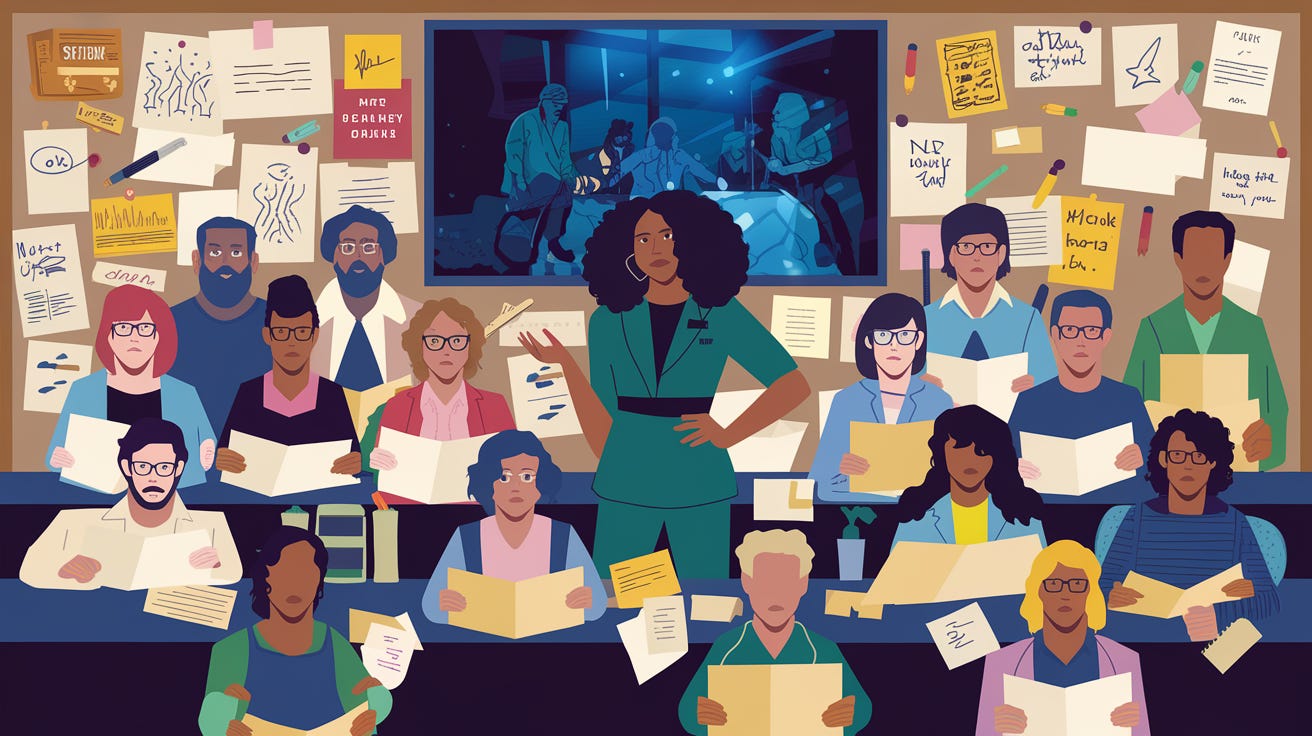Steal this one move from Shonda Rhimes to create binge-worthy content
In 2004, under the glaring fluorescent lights of a Hollywood writer’s room, Shonda Rhimes stared at the legal pad in front of her.
The walls were lined with scribbled notes, character sketches, and half-finished scenes. This wasn’t just any new TV pilot; it was her shot at finally bringing to life an idea that had occupied her mind for years - a hospital drama where the doctors’ lives were as messy as their patients’ cases.
She picked up her pen, paused, then wrote the last line of dialogue for what she was about to read aloud - a scene where a surgical intern begins reeling from their first loss. When she finished reading, silence filled the room. Everyone knew they were about to witness something special with this show.
The pilot for Grey’s Anatomy premiered in 2005, instantly captivating audiences. What stood out wasn’t just the medical cases - it was the emotional cliffhangers, the relentless conflict, and the deeply human resolutions.
Each character faced internal battles as compelling as the surgeries they performed. The formula wasn’t complex, but it was very intentional - every plotline had a hook to draw us in, a conflict that cut deep, and a resolution that left viewers wanting more.
By the time Shonda launched Scandal in 2012, her storytelling had become a cultural phenomenon. She had mastered the art of cliffhangers, leaving viewers gasping at the end of every episode. But her genius wasn’t just in the shock factor; it was in how she resolved these moments, pulling threads of humanity, redemption, and consequence through every arc.
Tools personal brand builders can also use to connect, engage, and leave an impact on their followers.
Did you know that content which uses a clear conflict and resolution structure performs 30% better in audience retention?
Stories with a clear beginning, middle and end are how we make sense of the world. Shonda’s approach to writing her award-winning shows prove that even complex ideas can be broken down into relatable, emotional narratives - using the most foundational storytelling techniques.
Rhimes didn’t just create TV shows; she created emotional experiences that kept viewers glued to their screens using the basics of storytelling:
start with a hook
build tension with relatable conflict themes
wrap up with a resolution that's satisfying, but leaves the perfect amount of intrigue for what’s next.
For entrepreneurs and creative professionals building a personal brand, her process is a masterclass in holding attention and delivering impact, without overcomplicating it.
Whether you’re pitching an idea, creating your brand's origin story, or writing content for social media - these foundational storytelling principles should be your North Star.
Here’s how you can use my H.O.O.K. Framework to create content that connects:
H – Hook with Emotion: Start with a relatable or emotional detail that grabs attention.
O – Own the Conflict: Highlight a challenge or tension that resonates with your audience.
O – Offer Resolution: Deliver a satisfying outcome that ties to your message.
K – Keep Them Curious: Leave room for intrigue to pull them into what’s next.
Why This Works
Rhimes’ approach to storytelling taps into universal human psychology. Stories structured with a clear beginning, middle, and end follow what researchers call the narrative arc - a pattern our brains are hardwired to recognize and engage with.
When a story starts with a strong hook, our attention locks in, seeking resolution. Adding emotional stakes throughout the conflict keeps us invested because we see the reflections of our own struggles. And when a resolution offers closure or inspires curiosity, it satisfies our need for meaning, while priming our imagination for what’s next.
That’s why audiences binge-watch Shonda’s shows, why they remember every twist and turn, and why these same principles can transform the way personal brand builders communicate with their audience.
For entrepreneurs and creatives professionals, understanding and applying this framework doesn’t just improve your content - it strengthens your ability to persuade through stories VS just boring, forgettable facts
Here’s What You’ll Get Out of It
A Playbook for Magnetic Communication: Learn how to structure your message to grab attention and keep your audience coming back for more.
The Key to Deep Connection: Create stories that resonate emotionally and authentically, leaving your audience feeling understood and inspired.
A Practical Tool for Any Medium: Apply this storytelling framework to pitches, brand messaging, presentations, or content creation with confidence.
“The magic of content lies in the tension between what your audience knows, and what they’re waiting to find out.”
Your Turn
Storytelling doesn’t have be complex. Start with mastering the basics - the beginning, the middle, and the end. Here’s how you can break it down into simple, actionable steps you can use to level-up your next piece of content:
Think about a moment from your life that taught you something or shifted your perspective. Begin with a detail that sets the scene or grabs interest. For example: “I stood in front of the room, palms sweaty, as I faced the toughest presentation of my career.”
What was the challenge or tension in this moment? Be clear about what you were up against or the decision you had to make. This is where your audience connects with your conflict.
How did you overcome the challenge or grow from the experience? The resolution ties everything together and leaves your audience with a sense of closure or inspiration.
Don’t over-complicate the narrative. Trust your audience to infer details that aren’t essential to the heart of the story.
Once you’ve finished, pull out the emotional impact for your audience and tie it back to one of your brand pillars. Then, practice again with another story, from a different angle.
These steps work because they mimic how we naturally process experiences - grabbing attention, keeping us engaged, and satisfying our need for meaning.




